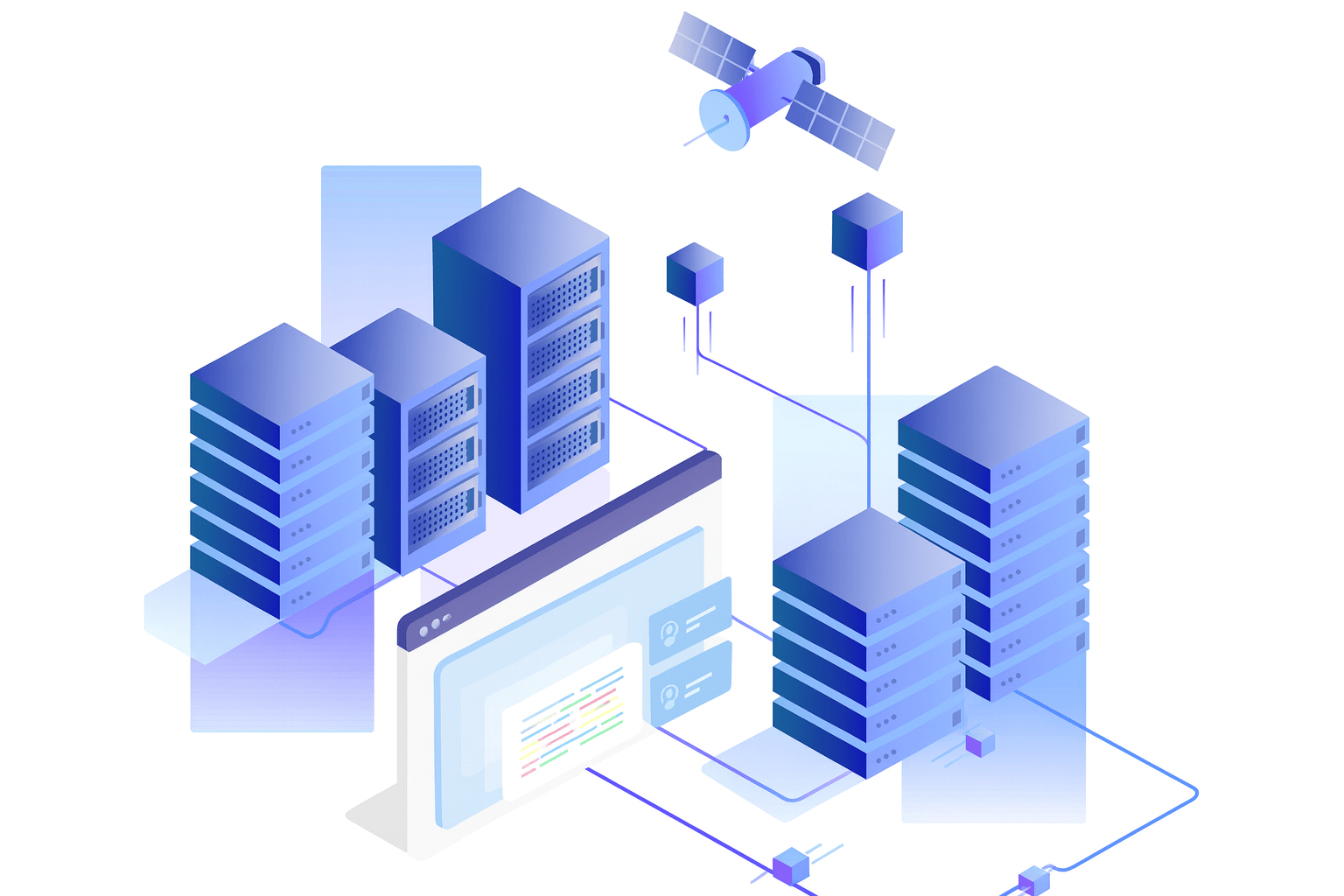
Netherlands vs Romania: Which European Dedicated Server Location Is Right for You?
When choosing dedicated hosting Europe, location is one of the most strategic factors that impacts performance, compliance, and total cost of ownership. Two of the strongest contenders in the European market are Netherlands dedicated servers and Romania dedicated servers. Both offer excellent infrastructure, competitive connectivity, and robust data privacy protections but the differences between them can significantly influence your hosting success.
In this in-depth guide, we’ll break down every factor you should consider before choosing between the Netherlands and Romania for your dedicated server Europe deployment. From latency benchmarks and DDoS protection to energy efficiency and cost analysis, this article gives you the clear, fact-driven answers you need.
Why Location Matters in Dedicated Hosting Europe
The physical location of your dedicated server determines network latency, regulatory compliance, and operational efficiency.
Key Factors Affected by Location:
- Latency & Speed: The closer your server is to your end users, the faster your content loads.
- Data Sovereignty: Your hosting country’s privacy laws determine how your data is stored and processed.
- DDoS Protection Efficiency: Proximity to scrubbing centers and network exchanges can impact how quickly malicious traffic is mitigated.
- Cost Structure: Energy prices, tax rates, and infrastructure availability vary by country.
- SEO Performance: Search engines sometimes favor servers located near the target audience, improving rankings for local searches.
Choosing between Netherlands dedicated servers and Romania dedicated servers is not about which is “better” universally, it’s about which aligns better with your specific audience, budget, and compliance needs.
Overview of the Netherlands as a Hosting Hub
The Netherlands is a top-tier European hosting hub with a strong reputation for high connectivity, advanced infrastructure, and data privacy leadership.
Core Advantages:
- AMS-IX Connectivity: Home to the Amsterdam Internet Exchange, one of the largest IXPs in the world.
- Global Reach: Low latency to Western Europe, Central Europe, and North America.
- Data Protection Laws: Fully compliant with GDPR and backed by a strong privacy culture.
- Green Hosting Leadership: Significant investment in renewable-powered data centers.
Typical Use Cases:
- SaaS platforms serving Europe and the US.
- High-compliance industries like finance and healthcare.
- High-traffic global websites requiring premium bandwidth.
Overview of Romania as a Hosting Hub
Romania has rapidly emerged as a cost-effective, high-bandwidth hosting location in Eastern Europe. Known for affordable pricing and strong technical expertise, it’s a serious contender for businesses targeting regional audiences.
Core Advantages:
- High Bandwidth at Low Cost: 10Gbps–20Gbps plans are often far more affordable than in Western Europe.
- Strategic Eastern European Access: Excellent latency to the Balkans, Turkey, and Central Europe.
- Data Privacy Compliance: Fully aligned with GDPR and EU regulations.
- Competitive DDoS Protection: Expanding infrastructure for mitigation services.
Typical Use Cases:
- Media streaming services for Eastern Europe.
- Gaming platforms targeting regional players.
- Startups seeking enterprise-grade hosting on a budget.
Comparative Analysis: Network Performance
Netherlands Dedicated Servers
- Latency to London: 8–12 ms
- Latency to Frankfurt: 8–10 ms
- Latency to New York: 70–80 ms
- Bandwidth Options: 1–20 Gbps
- Uptime SLA: 99.99%
Romania Dedicated Servers
- Latency to Sofia: 5–7 ms
- Latency to Frankfurt: 20–25 ms
- Latency to New York: 95–110 ms
- Bandwidth Options: 1–20 Gbps
- Uptime SLA: 99.9%
Bottom line:
Choose the Netherlands if your audience is concentrated in Western/Central Europe or the US.
Choose Romania for Eastern European focus and cost savings on high-bandwidth plans.
Security & DDoS Protection
Netherlands:
- Industry-leading DDoS capacity: 1–2 Tbps mitigation
- Multiple scrubbing center access via Tier 1 ISPs
- Advanced Layer 7 application protection
Romania:
- Solid DDoS capacity: 500 Gbps–1 Tbps
- Optimized for cost-effective protection
- Growing infrastructure for application-level filtering
Recommendation: If you operate in a high-risk vertical like gaming or finance, Netherlands dedicated servers offer the highest available mitigation capacity.
Compliance & Legal Considerations
Both the Netherlands dedicated servers and Romania dedicated servers operate under the European Union’s strict GDPR framework, ensuring that all hosted data meets high standards of privacy, consent, and security.
Netherlands: Known for its long-standing reputation in the global hosting industry, the Netherlands offers a stable legal environment, strong judicial independence, and proven trust among multinational corporations. This makes it a preferred location for industries with heavy regulatory requirements such as banking, healthcare, and government contracts.
Romania: While equally compliant with GDPR, Romania is often favored by startups and SMEs for its cost efficiency without compromising on legal safeguards. It provides a competitive edge for businesses that need dedicated hosting Europe capabilities while managing operational costs.
Ultimately, both countries meet EU compliance standards, but the Netherlands caters to risk-sensitive enterprises, while Romania appeals to agile businesses seeking affordable, compliant hosting.
Data Center Standards
When choosing between Netherlands dedicated servers and Romania dedicated servers, understanding data center quality is essential.
Netherlands: The country is home to a large concentration of Tier III+ data centers, many holding ISO 27001 certification for information security management. Facilities typically feature N+1 redundancy for both power and cooling, ensuring 99.99% uptime. They also connect directly to major European internet exchanges, such as AMS-IX, delivering exceptional low-latency performance.
Romania: Romania’s hosting sector is rapidly expanding, with an increasing number of Tier III facilities and growing adoption of ISO 27001 certification. While the market is newer compared to the Netherlands, it offers competitive performance, robust dedicated hosting Europe capabilities, and strong local connectivity in Eastern Europe.
Both countries provide reliable environments, but the Netherlands has a longer-established infrastructure, while Romania offers a cost-effective alternative without sacrificing essential standards.
Energy & Sustainability
Sustainability is an increasingly important factor when choosing between Netherlands dedicated servers and Romania dedicated servers.
Netherlands: The Netherlands leads Europe in green data center operations, with many providers integrating large-scale renewable energy sources such as wind and solar into their power supply. Several facilities operate on 100% renewable energy and offer carbon-neutral hosting options. Advanced cooling technologies, including liquid cooling and free-air systems, further reduce environmental impact.
Romania: Romania is making significant strides toward sustainable hosting but remains in a transition phase compared to the Netherlands. Many data centers are adopting energy-efficient UPS systems, improved cooling methods, and renewable energy sourcing. However, full-scale carbon neutrality is still in progress.
For businesses prioritizing eco-friendly infrastructure, the Netherlands offers a mature green hosting ecosystem. Romania, while not yet at the same level, presents a cost-effective option with ongoing sustainability improvements in its dedicated hosting Europe market.
Technical Infrastructure Deep Dive
Netherlands Dedicated Servers
- Tier III+ data centers
- Direct AMS-IX connectivity
- Xeon/EPYC processors, ECC RAM, NVMe SSD
- Dual power feed redundancy
- 24/7 NOC
Romania Dedicated Servers
- Tier III facilities
- Strategic Eastern European fiber routes
- Xeon CPUs, SSD/HDD options, unmetered 10–20Gbps
- Redundant cooling and power
- 24/7 support
Location Benchmarks — Speed & Performance Table
| Metric | Netherlands | Romania |
| London Latency | 8–12 ms | 35–40 ms |
| Frankfurt Latency | 8–10 ms | 20–25 ms |
| Sofia Latency | 35–40 ms | 5–7 ms |
| New York Latency | 70–80 ms | 95–110 ms |
| Singapore Latency | 165–175 ms | 180–200 ms |
| Uptime SLA | 99.99% | 99.9% |
Side-by-Side Feature Table
| Feature | Netherlands Dedicated Servers | Romania Dedicated Servers |
| Best For | Global SaaS, finance, compliance | Regional streaming, startups |
| Bandwidth Pricing | Higher per Gbps | Lower per Gbps |
| DDoS Protection | 1–2 Tbps | 500 Gbps–1 Tbps |
| Latency Advantage | West/Central Europe, US | Eastern Europe |
| Pricing Level | Premium | Budget to mid-range |
Decision Framework
- Audience Location: West/Central Europe or global → Netherlands; Eastern Europe → Romania
- Budget: Premium performance → Netherlands; cost efficiency → Romania
- Bandwidth: Global high-traffic → Netherlands; regional heavy bandwidth → Romania
- Compliance: High-trust industries → Netherlands; flexible startups → Romania
- DDoS Threat Level: Extreme → Netherlands; moderate → Romania
Real-World Use Cases
Netherlands Dedicated Servers
- Global Fintech SaaS: Chosen for ultra-low latency and strong compliance with EU financial regulations, making it ideal for payment gateways and financial analytics platforms.
- High-Frequency Trading Platforms: Direct access to major internet exchanges like AMS-IX ensures microsecond-level data transfer speeds.
- Multinational eCommerce: Stable infrastructure and advanced DDoS protection safeguard global online stores handling millions of transactions.
Romania Dedicated Servers
- Video-on-Demand for Balkan Markets: Localized hosting ensures low buffering times and high availability for regional streaming services.
- Gaming Servers for Eastern Europe: Proximity to the player base reduces lag, enhancing user experience in competitive gaming environments.
- Budget-Friendly Cloud Backups: Affordable dedicated hosting Europe solutions with robust redundancy make Romania ideal for scalable backup storage.
Both locations deliver reliable, industry-specific benefits, but the Netherlands excels in high-compliance, latency-sensitive projects, while Romania leads in cost-optimized regional deployments.
Smart Hosting Choices: Netherlands or Romania?
When deciding between Netherlands dedicated servers and Romania dedicated servers, your choice should be guided by three core factors: audience geography, budget priorities, and security requirements.
Choose the Netherlands if your business relies on premium global connectivity, extremely low latency to Western Europe and North America, and access to some of the world’s best internet peering points. Dutch data centers are known for Tier III+ infrastructure, strict compliance with EU regulations, and a dense fiber backbone, making them a top pick for enterprises needing consistent performance and advanced DDoS protection.
Choose Romania if you require cost-effective, high-capacity bandwidth while targeting Eastern European markets. Romanian facilities deliver impressive throughput, reliable uptime, and attractive pricing, making them ideal for media-heavy applications, streaming platforms, and SaaS products looking to scale without overspending.
In both cases, selecting the right dedicated hosting Europe location offers tangible benefits in speed, reliability, and scalability. Whether you need the unmatched network reach of the Netherlands or the budget-friendly power of Romania, aligning your hosting location with your strategic goals ensures your infrastructure supports growth, compliance, and user satisfaction across your target regions.

